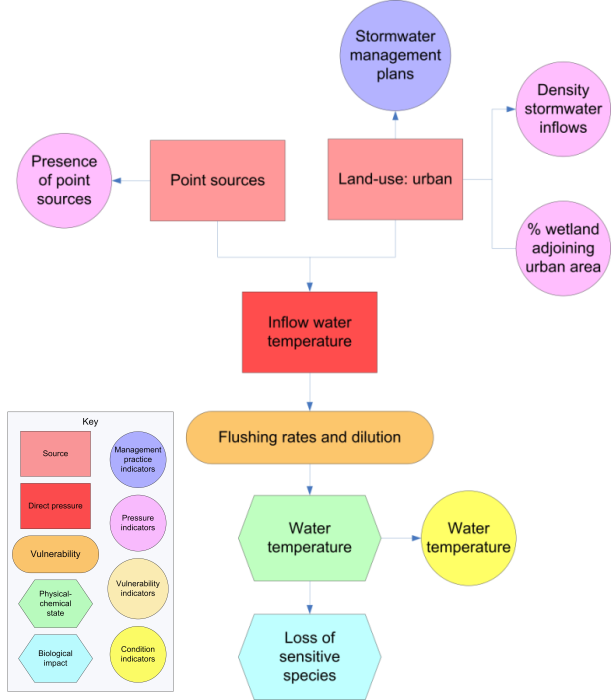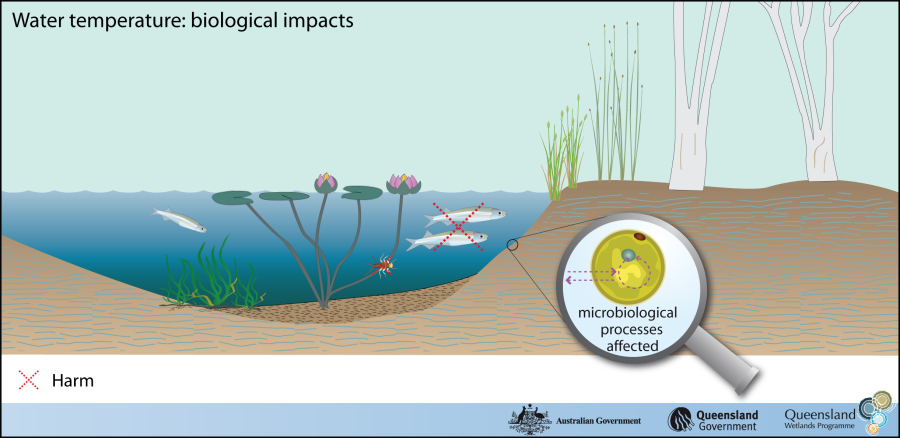|
|
Water temperature – StateWater temperature – StateFlow chart showing the major elements associated with water temperature management
Click on elements of the flow chart or select from the tabs below
Water temperature has a direct physiological effect on biota (e.g. affecting basic processes such as growth, mobility, reproduction, photosynthesis and respiration). However, biota have upper and lower tolerable limits. Some species are more susceptible to these limits than others. Susceptible species abundance will decrease while tolerant species may increase (e.g. algal blooms) altering the community structure. Mass mortality may also occur due to anoxic/hypoxic related events.
Last updated: 22 March 2013 This page should be cited as: Department of Environment, Science and Innovation, Queensland (2013) Water temperature – State, WetlandInfo website, accessed 8 May 2025. Available at: https://wetlandinfo.des.qld.gov.au/wetlands/management/pressures/lacustrine-palustrine-threats/water-temperature/state.html |

 — Department of the Environment, Tourism, Science and Innovation
— Department of the Environment, Tourism, Science and Innovation



